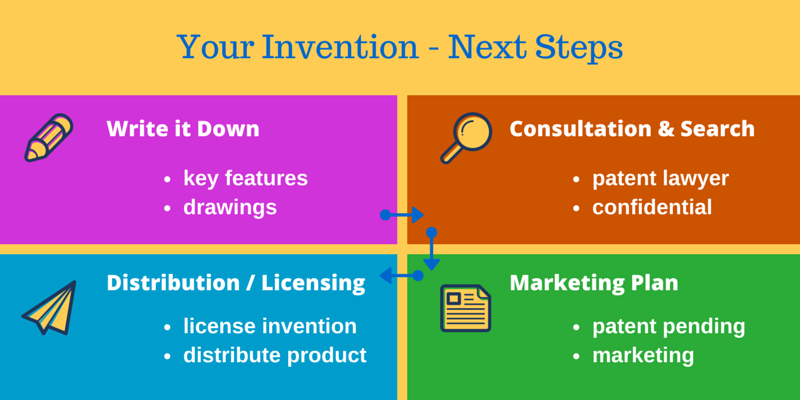What to do after you invented something?

Document Your Invention
After you have figured out most of the details of your invention, the first thing you will need to do is to record your invention as best as possible. Prepare a written description of your invention. Start with a brief description of what problem your invention is designed to solve. Then record as many details about your invention as you can. Write down what aspects of your invention are new and inventive. You don't have to be fancy. Even simple point form lists may be enough to adequate describe and explain your invention. Prepare drawings to illustrate your invention. The drawings don't have to be fancy - even hand drawn sketches can be enough. Date the documents so that, in the event of a dispute, you can demonstrate a "paper trail" that might help you sort out disputes down the road.
Consult a Patent Lawyer
It's a good idea to find out if you can patent your invention before investing too much in the project. If you can patent your invention, then you'll need to keep the invention secret. Your patent lawyer can also help you file a quick patent application so that you won't lose your rights if you talk with engineers or potential investors or partners. Your patent lawyer can also conduct a patent search to flesh out any possibly conflicting patent applications. In addition, your patent lawyer might be able to help you find resources to aid in further developing and marketing your invention.
Contact us to set up a consultation which includes a quick patent search.
Create a Marketing Plan
The next step is to plan out how to commercialize your invention. There are generally two ways to proceed - license your invention to a company (i.e. sell the idea), or go into business selling, providing or distributing the product. Regardless of which method you use, you will probably need two things - investors and intellectual property (patents and / or trademarks). Filing a patent application allows you to use the term "patent pending" to describe your invention, so you can start marketing your invention as soon as the patent application is filed. Your patent lawyer can also help you secure trademarks if you plan on selling the invention yourself.
As for investors, you can set up a corporate structure to raise investment capitol for the project. Investors essentially buy into the project by buying shares in the company that owns the project. Anyone could be an investor including friends and family.
Other vehicles for raising financing include bank loans and crowd funding sites such as Kickstarter.com and Indigogo.com
Your lawyer may be able to assist you in finding someone who can help you create a marketing / business plan.
Distribution or Licensing
If your plan was to get the invention on the market yourself, then you'll want to make sure your "ducks are in a row". If patents are a consideration you'll want to make sure that appropriate patent applications have been filed. You'll probably want to ensure that your trademarks have been properly selected and applied for. You will want to ensure that you have a proper corporate structure put in place to protect you from legal liability in the event something goes wrong.
If your plan is to license or sell the invention directly to a company, then proceed only after you have filed for patent protection. You will need to create marketing materials for the project, such as quick presentations and summaries. Most importantly, you will have to cultivate contacts in the industry and companies you are targeting. Look to trade associations that may operate in those fields, and consult with a company directory to find smaller companies in the same industry that you might not have thought of targeting.
If you need personal assistance, or if you have any questions or would like to set up a free consultation, then:
Call Us at 416-621-0100 or email us at elias@borgesrolle.com